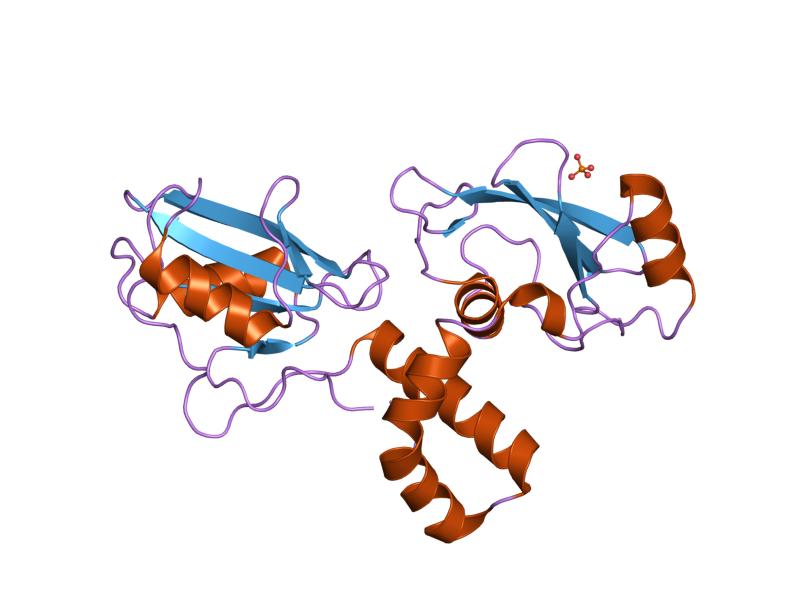Hypochondroplasia on:
[Wikipedia]
[Google]
[Amazon]
Hypochondroplasia (HCH) is a developmental disorder caused by an autosomal dominant genetic defect in the fibroblast growth factor receptor 3 gene ('' FGFR3'') that results in a disproportionately short stature, micromeliaupdate 2013 and a head that appears large in comparison with the underdeveloped portions of the body. It is classified as short-limbed
 This disorder results from mutations in the proximal tyrosine kinase domain of the FGFR3 gene. This gene plays an important role in embryonic development, playing a part in regulating activities such as
This disorder results from mutations in the proximal tyrosine kinase domain of the FGFR3 gene. This gene plays an important role in embryonic development, playing a part in regulating activities such as
 Treatment of hypochondroplasia usually takes the form of
Treatment of hypochondroplasia usually takes the form of
dwarfism
Dwarfism is a condition wherein an organism is exceptionally small, and mostly occurs in the animal kingdom. In humans, it is sometimes defined as an adult height of less than , regardless of sex; the average adult height among people with dw ...
.
Signs and symptoms
Individuals affected by this disorder appear normal at birth. As the infant grows, however, their arms and legs do not develop properly, and their body becomes thicker and shorter than normal. The following are characteristics consistent with this condition: *Brachydactyly
Brachydactyly (Greek βραχύς = "short" plus δάκτυλος = "finger"), is a medical term which literally means "short finger". The shortness is relative to the length of other long bones and other parts of the body. Brachydactyly is an i ...
* Short stature
* Micromelia
* Skeletal dysplasia
* Abnormality of femur
The femur (; ), or thigh bone, is the proximal bone of the hindlimb in tetrapod vertebrates. The head of the femur articulates with the acetabulum in the pelvic bone forming the hip joint, while the distal part of the femur articulates ...
Cause
Hypochondroplasia is transmitted as an autosomal dominant trait affecting the ''FGFR3'' gene on chromosome 4p16.3. There is currently no cure for this condition.Pathophysiology
 This disorder results from mutations in the proximal tyrosine kinase domain of the FGFR3 gene. This gene plays an important role in embryonic development, playing a part in regulating activities such as
This disorder results from mutations in the proximal tyrosine kinase domain of the FGFR3 gene. This gene plays an important role in embryonic development, playing a part in regulating activities such as cell division
Cell division is the process by which a parent cell divides into two daughter cells. Cell division usually occurs as part of a larger cell cycle in which the cell grows and replicates its chromosome(s) before dividing. In eukaryotes, there ...
, migration and differentiation.
Hypochondroplasia can result from p. Lys650Asn as well. In FGFR3, some 20 different mutations have been associated to hypochondroplasia, and it seems to have a role in skeletal dysplasia.
Diagnosis
The diagnosis of this condition can be done viaX-rays
An X-ray, or, much less commonly, X-radiation, is a penetrating form of high-energy electromagnetic radiation. Most X-rays have a wavelength ranging from 10 picometers to 10 nanometers, corresponding to frequencies in the range 30&nbs ...
(with lack of normal distance L1 to L5), and additionally genetic testing is available to ascertain hypochondroplasia. However, the physical characteristics are one of the most important in determining the condition.
Treatment
 Treatment of hypochondroplasia usually takes the form of
Treatment of hypochondroplasia usually takes the form of orthopedic surgery
Orthopedic surgery or orthopedics ( alternatively spelt orthopaedics), is the branch of surgery concerned with conditions involving the musculoskeletal system. Orthopedic surgeons use both surgical and nonsurgical means to treat musculoskeletal ...
and physical therapy. Genetic counseling is advised for individuals and their families. Specifically in the case of spinal stenosis, one option is laminectomy
A laminectomy is a surgical procedure that removes a portion of a vertebra called the lamina, which is the roof of the spinal canal. It is a major spine operation with residual scar tissue and may result in postlaminectomy syndrome. Depending ...
.
Prognosis
Life expectancy for individuals with hypochondroplasia is normal; height is about .See also
* Achondroplasia *List of congenital disorders
List of congenital disorders
{{TOC right
Numerical
* 5p syndrome - see Cri du chat syndrome
A
* Albinism
* Amelia and hemimelia
* Amniotic band syndrome
* Anencephaly
* Angelman syndrome
* Aposthia
* Arnold–Chiari malformation
B
* Ba ...
References
Further reading
* *External links
{{Receptor deficiencies Skeletal system Growth disorders Cell surface receptor deficiencies Autosomal dominant disorders Rare diseases